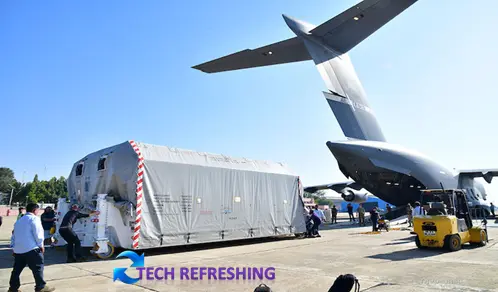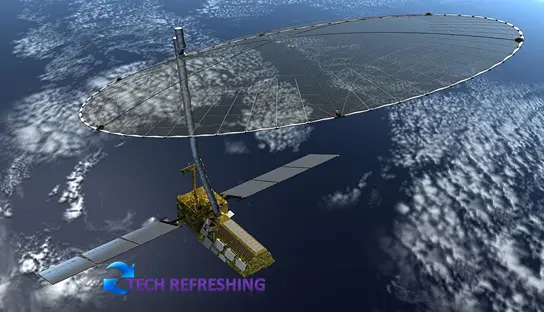The upcoming NISAR mission is poised to employ the most sophisticated radar system ever utilized in a NASA scientific undertaking, enabling us to delve deeper into topics such as natural disasters, dwindling sea ice, and water resources, among other subjects.
NASA and the Indian Space Research Organisation (ISRO) are collaborating on an Earth-observing mission called NISAR. The NISAR mission aims to study Earth’s natural hazards, melting sea ice, groundwater supply, and more using advanced radar systems that will observe nearly all of Earth’s land and ice surfaces twice every 12 days.
NISAR Payload Completes Journey
The scientific instrumentation for the NISAR mission, comprising two radar systems built by NASA and ISRO respectively, has successfully made the trip from NASA’s Jet Propulsion Laboratory located in Southern California to ISRO’s U R Rao Satellite Centre in Bengaluru, India. The next step involves integrating the satellite’s body, or bus, with the radar systems, which will be followed by rigorous testing by the teams at the facility in preparation for the three-year mission.

The Most Advanced Radar System
The NISAR mission will include the deployment of the most cutting-edge radar technology ever launched by NASA for a scientific purpose. This will incorporate an unprecedentedly large radar antenna that takes the form of a drum-shaped wire mesh reflector spanning approximately 40 feet (12 meters) in diameter. The antenna will be attached to a 30-foot (9-meter) boom. The scientific tools utilized for this mission will primarily be comprised of L- and S-band radar systems, denoting the specific wavelengths of the signals they generate.
The S-band radar system was fabricated by ISRO and transported to JPL in March 2021. Over the past two years, engineers have been occupied with merging the instrument with the JPL-produced L-band system, and subsequently performing assessments to confirm their harmonious operation.
Journey to Launch
Towards the end of February 2023, technicians and engineers at JPL securely packed the scientific payload into a specialized shipping container within a clean room. The container was then lifted onto a flatbed truck and transported to March Air Reserve Base, located in Riverside County, California. From there, a C-17 cargo aircraft of the U.S. Air Force was utilized to transport the payload to Bengaluru, where it arrived on March 6th.
The NISAR mission marks the initial partnership between NASA and ISRO on an Earth-observation initiative. JPL is the primary coordinator of the U.S. portion of the project and is responsible for providing the L-band SAR, the radar reflector antenna, the deployable boom, a high-speed communication system for science data, GPS receivers, a solid-state recorder, and the payload data subsystem. ISRO, conversely, bears responsibility for the spacecraft bus, the S-band SAR, the launch vehicle, as well as the launch services and satellite mission operations associated with the project.
Launch Date
ISRO’s Geosynchronous Satellite Launch Vehicle Mark II rocket is slated to carry the satellite on its next voyage, scheduled to take place in 2024 from Satish Dhawan Space Centre, situated along India’s southeastern shoreline, and transport NISAR into a near-polar Earth orbit. Following this, NISAR will have the capability to gather measurements around the clock, regardless of weather conditions, thereby aiding researchers in improving their comprehension of numerous topics related to Earth science.
Conclusion
The NISAR mission is an exciting collaboration between NASA and ISRO that will bring new insights into various aspects of Earth’s environment. With its advanced radar system and the largest-ever radar antenna, NISAR will enable researchers to study natural hazards, melting sea ice, groundwater supply, and more.
The successful completion of the journey of the mission’s science payload from NASA’s Jet Propulsion Laboratory to ISRO’s U R Rao Satellite Centre in Bengaluru marks a significant step towards the planned 2024 launch. Upon becoming operational, NISAR will amass data around the clock, in all types of weather, which will provide researchers with valuable insights into a wide array of Earth science subjects. The NISAR mission serves as a testament to the efficacy of international partnerships, as well as the remarkable potential of space technology in enhancing our understanding of our planet.


